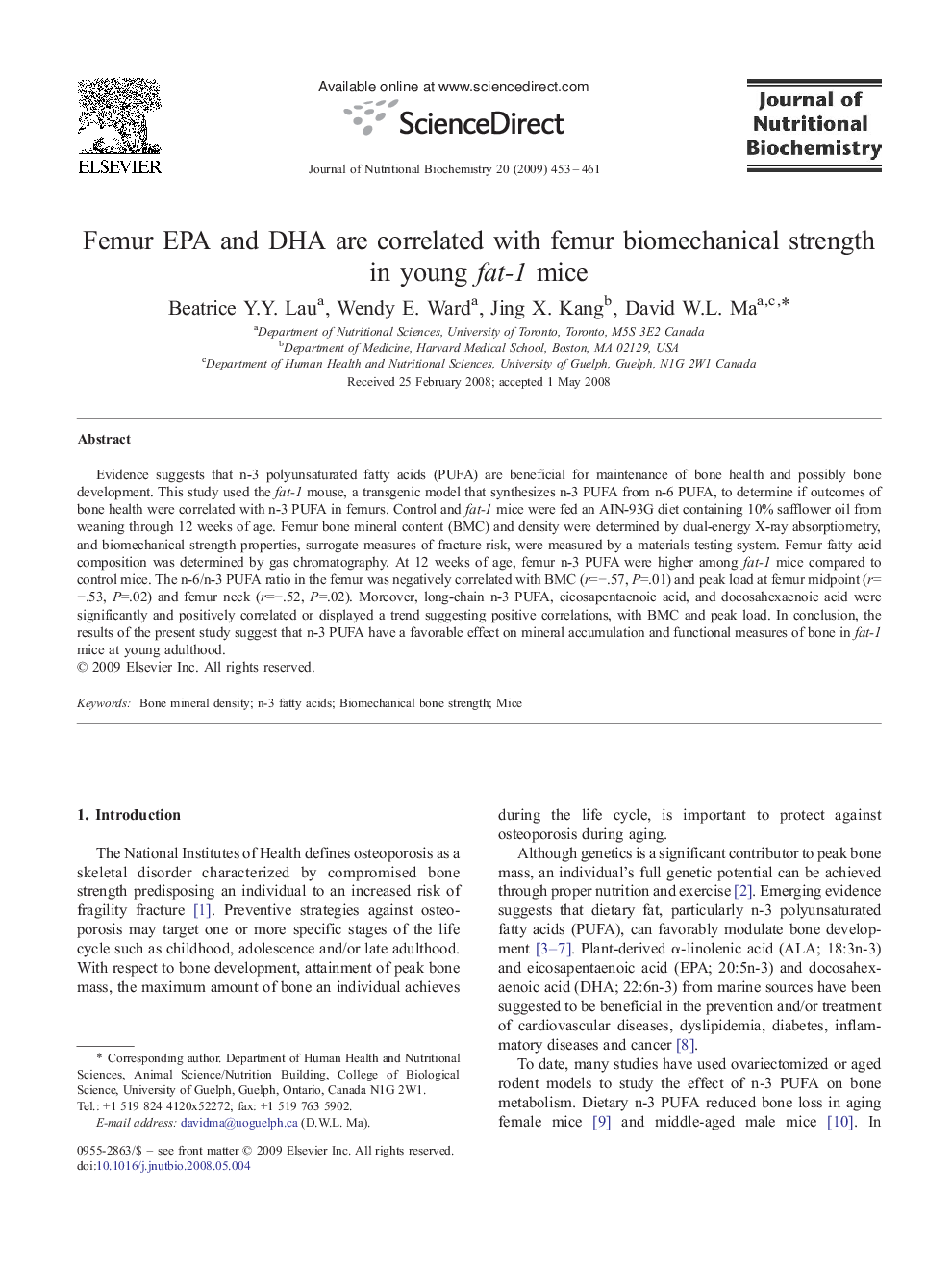| کد مقاله | کد نشریه | سال انتشار | مقاله انگلیسی | نسخه تمام متن |
|---|---|---|---|---|
| 1990373 | 1540720 | 2009 | 9 صفحه PDF | دانلود رایگان |

Evidence suggests that n-3 polyunsaturated fatty acids (PUFA) are beneficial for maintenance of bone health and possibly bone development. This study used the fat-1 mouse, a transgenic model that synthesizes n-3 PUFA from n-6 PUFA, to determine if outcomes of bone health were correlated with n-3 PUFA in femurs. Control and fat-1 mice were fed an AIN-93G diet containing 10% safflower oil from weaning through 12 weeks of age. Femur bone mineral content (BMC) and density were determined by dual-energy X-ray absorptiometry, and biomechanical strength properties, surrogate measures of fracture risk, were measured by a materials testing system. Femur fatty acid composition was determined by gas chromatography. At 12 weeks of age, femur n-3 PUFA were higher among fat-1 mice compared to control mice. The n-6/n-3 PUFA ratio in the femur was negatively correlated with BMC (r=−.57, P=.01) and peak load at femur midpoint (r=−.53, P=.02) and femur neck (r=−.52, P=.02). Moreover, long-chain n-3 PUFA, eicosapentaenoic acid, and docosahexaenoic acid were significantly and positively correlated or displayed a trend suggesting positive correlations, with BMC and peak load. In conclusion, the results of the present study suggest that n-3 PUFA have a favorable effect on mineral accumulation and functional measures of bone in fat-1 mice at young adulthood.
Journal: The Journal of Nutritional Biochemistry - Volume 20, Issue 6, June 2009, Pages 453–461